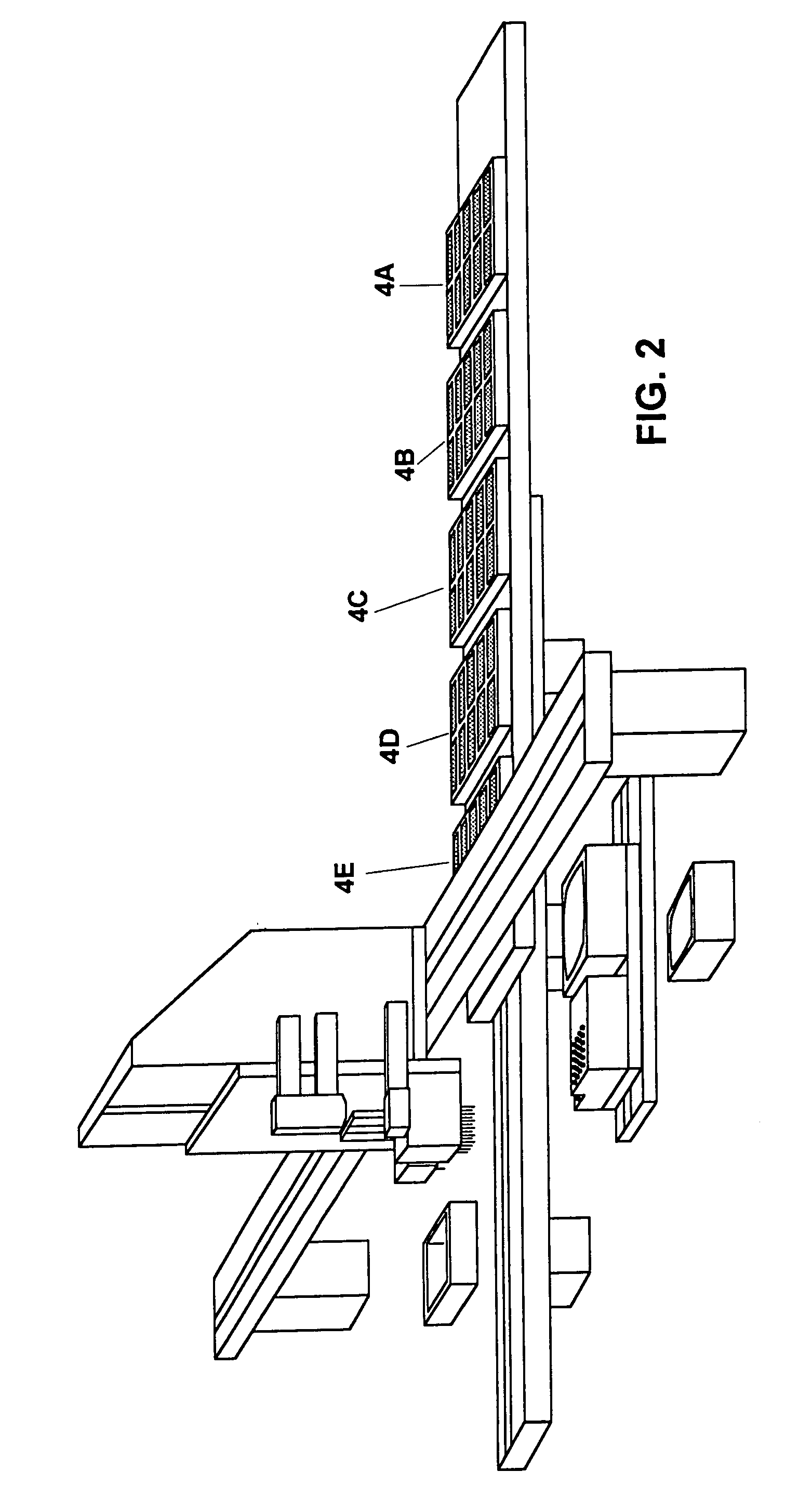High capacity microarray dispensing
- Summary
- Abstract
- Description
- Claims
- Application Information
AI Technical Summary
Benefits of technology
Problems solved by technology
Method used
Image
Examples
first preferred embodiment
[0037]A detailed description of a first preferred embodiment of the present invention can be described by reference to FIGS. 1–38B. During the operation of the present invention, solution from reservoir plate 5 is automatically deposited onto an array of fifty blank slides 4A1–4E10 located on locating plates 4A–4E (see FIG. 1). An operator is able to select via a computer interface whether dispense tip 42 (located underneath dispense head 40) or a 4×6 array of dispense tips 7 (located underneath dispense head 6) will be used to make the deposits onto slides 4A1–4E10. In the preferred embodiment, dispense tips 7 and 42 are quill type dispense tips. Locating plates 4A–4E are mounted on linear actuator 15 so that they can move along the x-axis. Linear actuator 26 is mounted on linear actuator 21 so that linear actuator 26 can move along the y-axis. Dispense heads 6 and 40 are mounted on linear actuator 26 so that they can move along the z-axis. Camera 12 with strobe light 13 is focused...
third preferred embodiment
[0095]A perspective view of the third preferred embodiment is seen by reference to FIG. 42. The third preferred embodiment is similar to the second preferred embodiment in that it has the advantage of accommodating high capacity microplate handling capabilities. The third preferred embodiment of the present invention utilizes microplate indexing station 700, also shown in FIGS. 44A and 44B. Embodiments of microplate indexing station 700 were described in detail in U.S. application Ser. No. 09 / 411,943, the specification of which is herein incorporated by reference. In U.S. application Ser. No. 09 / 411,943, microplate indexing station 700 was described as being used in conjunction with an automated microplate filling device and it included a microplate fill nozzle. In the third preferred embodiment of the present invention, microplate indexing station 700 is used in conjunction with other components to dispense solution onto slides.
Overview of the Operation of the Third Preferred Embod...
PUM
 Login to View More
Login to View More Abstract
Description
Claims
Application Information
 Login to View More
Login to View More - R&D
- Intellectual Property
- Life Sciences
- Materials
- Tech Scout
- Unparalleled Data Quality
- Higher Quality Content
- 60% Fewer Hallucinations
Browse by: Latest US Patents, China's latest patents, Technical Efficacy Thesaurus, Application Domain, Technology Topic, Popular Technical Reports.
© 2025 PatSnap. All rights reserved.Legal|Privacy policy|Modern Slavery Act Transparency Statement|Sitemap|About US| Contact US: help@patsnap.com



